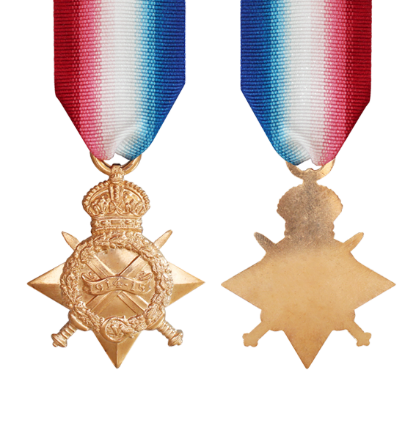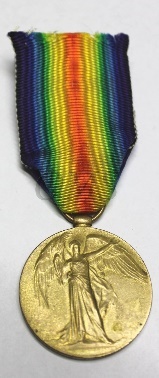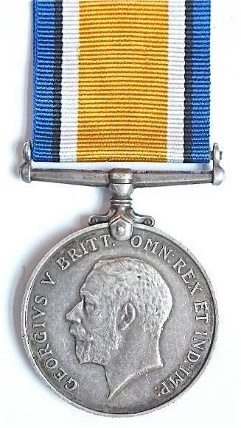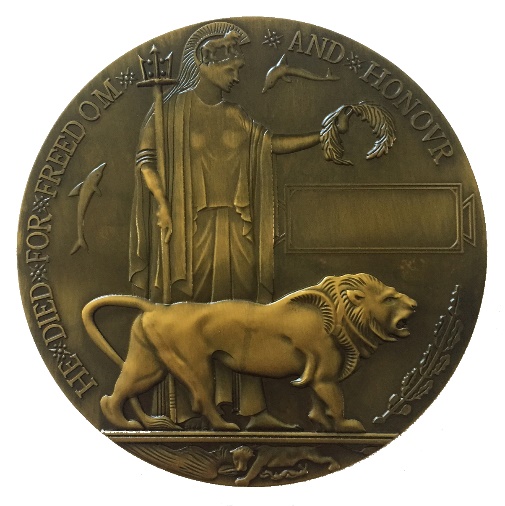B Short
1884 – 1914
Private 8421, South Wales Borderers, 1st Battalion
Lived at 29 Birch Grove, Tirphil

Photo Courtesy of Kim Davies
Alexander Charles Short was born in Bow, London in 1884 to Henry Alfred Snr & Elizabeth Short. He had 2 sister Beatrice & Florence and 2 brothers Henry Alfred Jr & Christopher.
In 1881, when Alexander was 6 years old, he lived with his mother, Father and eldest brother Henry at Cowley Street, Saint George East, London. At this time, he was a scholar. His Father was a Lighterman Barge, and his brother Henry, a Van Guard.
By 1901 Alexander’s mother Elizabeth had died and his father had married again to Rachel Hipkins. They are now living in Gladstone Place, Gravesend, Kent. They lived alone with none of the children.
By 1911 Alexander was 26 and lived in Birch Grove, Tirphil with Mathew & Mary Davies and their 3-year-old daughter. He was now a colliery timberman. At this time, he was stated as single, but he lived 3 doors away from his future wife Rosina Jones, 17, who lived with her father Isaac Jones.
Alexander Charles Short married Rosina Jones 2nd March 1914. They had 2 boys, Henry Alfred “Harry” Short & Alexander Charles “Jackie” Short.
Alexander enlisted for War in Bargoed, under the alias of Barnard. He served with the South Wales Borderers 1st Battalion as private 8421. He was Killed in Action November 4th, 1914. He is remembered with Honour as A.C Barnard. YPRES (MENIN GATE) MEMORIAL Panel 22.
For further information visit the Commonwealth War Graves Commission website.
Gallery

Photo courtesy of John & Kim Davies

www.fold3.com

www.fold3.com

www.fold3.com

www.fold3.com
Family Memories
“My grandfather’s name appears on the memorial in Troedrhiwfuwch as Barnard Short. He sighed himself in the army as Alexander/Alfred Charles Barnard, but his name was Alexander Charles Short. The reason for this is as we understand it, he was born and brought up in East London a cockney after his mother died when he was young his father remarried and he couldn’t get along with his stepmother, so at the age of fourteen he ran away and joined the army after lying about his age his father then traced him and was discharged as underage and taken back home. After a while he ran away again to South Wales to make it more difficult to be traced. He met my grandmother and married they had two sons Alexander Short & my father Henry Alfred Short. The war started and he enlisted but when waiting in the queue he noticed a grocery cart with the name Barnard so as not to get found by his father he enlisted as Alexander Charles Barnard. This is the place where Short became Barnard his name is on the Menin Gate Memorial in Ypres Belgium”. – Kim Davies, Granddaughter
Battles Of Ypres - Battle Of Gheluvelt - 29/10/1914
Location: Gheluvelt (Geluveld). British tactical, strategic and moral victory. Less than a week after their failed attacks on Langemarck, On 29th October, German troops assaulted the most vulnerable sector of the British line, that from Gheluvelt (Geluveld), south to Ploegsteert Wood.
Numerically superior by approximately six to one and with nearly 1,000 artillery pieces in support, massed German attacks were made against the positions of 1st and 7th Divisions driving them back to Gheluvelt. Bitter close-quarter, almost hand to hand fighting for the rest of the day, and the following, failed to break the British defence, although the villages of Zandvoorde and Zillebeke plus Zillebeke Chateau fell in 7th Division's sector.
1st Division holding positions north of the Menin Road, south of Zonnebeke, the attacking falling hardest on 1st Guards Brigade, 1st Black Watch (Royal Highlanders), 1st Coldstream Guards and 1st Scots Guards who were pushed back over a mile suffering heavy losses. 3rd Infantry Brigade staging a counter-attack, 1st Queen's (Royal West Surrey Regiment), 2nd Welsh Regiment and 1st South Wales Borderers regaining some ground.
At dawn on 31st October a further massed German assault, the largest yet assembled, was also repulsed by 1st Queen's (Royal West Surrey Regiment) and 2nd Welsh Regiment, with the assistance of 54th Battery, Royal Field Artillery, but following an intense artillery barrage a second assault broke the line of 7th Division to their right, outflanking them and pushing through to Gheluvelt. The Menin Road, gateway to the city of Ypres and the city itself, less than 5 miles away, were open to the Germans.
Desperate to hold Ypres, the British assembled a scratch force from 1st Division; 1st Gloucestershire Regiment, 1st Loyal North Lancashire Regiment, 2nd Welsh Regiment, 2nd King's Royal Rifle Corps, a less than half strength 2nd Worcestershire Regiment and 80 men from the Gordon Highlanders to counter-attack. The 2nd Worcesters, advanced without cover across 1000 yards (losing about a third of their 350 men) and took Gheluvelt Chateau from its surprised occupants at bayonet point, just three hours after it had fallen.
1st Division's scratch troops, in an action no less daring or brave, secured an important sector of the line near Veldhoek while the Gordons regained ground towards Zandvoorde. At the end of the day, General Haig as commander of I Corps ordered that British troops were to be withdrawn to a newly prepared defensive line less than half a mile west of Gheluvelt, a line which would be held and from which there would be no retreat.
Source: www.forceswarrecords.com
Medals

The 1914–15 Star was instituted in December 1918 and was awarded to officers and men of British and Imperial forces who served against the Central European Powers in any theatre of the Great War between 5 August 1914 and 31 December 1915, provided they had not already received the 1914 Star. The period of eligibility was prior to the Military Service Act 1916, which introduced conscription in Britain

The Victory Medal (United Kingdom) was issued to all those
who received the 1914 Star or the 1914–15 Star, and to most of those who were
awarded the British War Medal. It was not awarded singly.
To qualify, recipients need to have served in
the armed forces of the United Kingdom or the British Empire, or with certain
recognised voluntary organisations, and have entered any theatre of war between
5 August 1914 and 11 November 1918.

This silver medal was awarded to officers and men of the British and Imperial Forces who either entered a theatre of war (an area of active fighting) or served overseas (perhaps as a garrison soldier) between 5 August 1914 and 11 November 1918 inclusive. This medal was automatically awarded in the event of a death on active service.

The World War One Memorial Plaque was made from Bronze and hence it was popularly known as the “Dead Man’s Penny” among front-line troops, also becoming widely known as, the “Death Penny”, “Death Plaque” or “Widow's Penny”. It was in October 1916 that the British Government setup a committee for the idea of a commemorative plaque that could be given to the next of kin for those men and women whose deaths were due to the First World War of 1914-18.